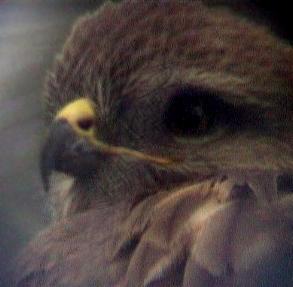
 |
|||||
CountyNatureTrust
|
|||||
|
Home | About Us | Current Projects | Ballyannan | News/Events | Features | Kids' Stuff | Links | Contact Us
|
|||||
|
THE SPREAD OF THE BUZZARD IN
IRELAND  |
||||||
|
By Harry Hussey In these days of widespread
species decline, it is refreshing to hear a good news story. One such example
is that of the recovery of the Buzzard population in Ireland. The historical
status of the Buzzard is not known in any great detail. Up to the mid 19th century Buzzards were still breeding in counties
Antrim, Donegal and Down, presumably the remnants of a once much wider, possibly nationwide distribution. The decline of the Buzzard in Ireland was first noted around 1852 and the species had eventually become
extinct in Ireland by the early 20th century. Persecution was the main cause
for the extinction of a number of other large raptors in Ireland during this period including the Golden Eagle and the Red
Kite. In the 1930s, Buzzards
recolonised Ireland naturally from Scotland, rising steadily to a population of about 10 pairs by 1954. After the introduction of Myxomatosis, which devastated the population of Rabbits (the Buzzard’s
main prey species) these birds were extinct again by 1964. Fortunately, fresh
colonisation from Scotland soon followed once more, and birds were recorded breeding again in Antrim, Donegal and Down during
the Breeding Atlas Survey of the mid 1970’s (Sharrock 1976). Numbers have since
built up steadily in the north of Ireland including Donegal; however Buzzards have been slow to spread further south. This
has largely been attributed to the continued use of the poison Strychnine in the Irish Republic. Buzzards readily feed on carrion and are thus more likely to fall foul of poisoned carrion intended for
crows and foxes. Strychnine has long been banned in Northern Ireland, which is
a major factor in the success of the species there. In 1991, the use of
Strychnine was finally prohibited in the Republic of Ireland. This has allowed
the population of Buzzards to expand and increase to almost 200 pairs within the 26 counties.
Breeding is now well established as far south as Wicklow. Within our region,
the species has long been suspected of breeding. Positive proof of breeding has
finally been obtained for the first time in the summer of 2004, with the discovery of two pairs in County Cork! The spread of Buzzards
should be seen as beneficial to Agriculture. With a diet largely consisting of
animals and birds often considered as agricultural pests (rabbits, rats and rooks), Buzzards will also readily feed on carrion,
further helping to keep the populations of these pest species under control. Buzzards
will not attack healthy lambs or other livestock; however birds may feed on the carcass of a dead animal. It remains to be seen
if the momentum of the spread of Buzzards in Ireland can be sustained. There
are large areas of suitable habitat currently unoccupied by these remarkable raptors.
With the banning of Strychnine and the reduced pressure of persecution there is no reason why the species should not expand
nationwide in the coming years. We welcome the return of this beautiful bird
to our skies. The County Nature
Trust would like to hear of any sightings of Buzzards in Munster, particularly records of birds during the Spring and Summer
months. If you have seen Buzzard in your area, please drop us a line. REFERENCES Sharrock, J.T.R. (1976)
The atlas of breeding birds in Britain and Ireland. T. & A.D. Poyser
|
||||||
|
|
||||||